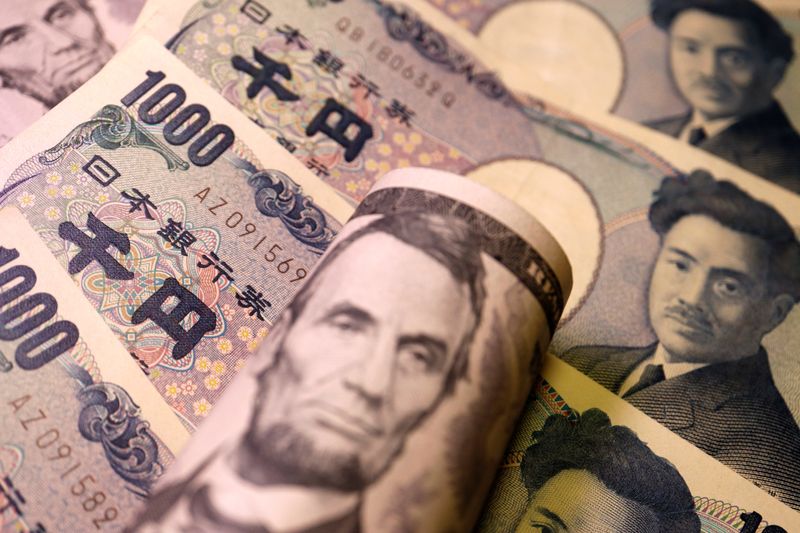Japan’s yen bears brunt of market rethink on Fed
2022.08.12 04:46

FILE PHOTO: Japanese yen and U.S. dollar banknotes are seen in this illustration picture taken June 15, 2022. REUTERS/Florence Lo/Illustration
By Rae Wee and Vidya Ranganathan
SINGAPORE (Reuters) – The Japanese yen fell the most against a resurgent U.S. dollar on Friday, as a two-day rally in equities conceded to market expectations that the Fed will have to do a lot more to contain inflation.
That realisation followed speeches and statements from a bunch of Federal Reserve officials warning investors against being sanguine after this week’s slight softening in inflation numbers.
The latest was San Francisco Fed President Mary Daly, who said on Thursday that a 50 basis point interest rate hike in September “makes sense” given recent economic data including on inflation, but that she is open to a bigger rate hike if data warrants.
The Nasdaq and S&P 500 retreated on Thursday, despite fresh evidence of cooling inflation.
The dollar index rose 0.1% to 105.210, with the euro down to $1.0311.
The Japanese yen weakened 0.12% to 133.19 per dollar, while sterling was last trading at $1.2184, down 0.23% on the day.
The euro rose 0.05% against the yen at 137.340.
Even the kiwi, supported by expectations of a big rate rise in New Zealand next week, fell 0.16% versus the greenback to $0.643.
“The market will come to a realization that the FOMC has a lot more work to do and they will have to increase the funds rate to as high as 4% at the end of this year,” said Carol Kong, a Sydney-based senior associate for currency strategy and international economics at Commonwealth Bank of Australia (OTC:CMWAY).
“I do think there is some room for markets to revise higher again their expectation for the Fed funds rate, so that will help the U.S. dollar to push higher again and erase all the losses following the CPI and PPI figures that we got.”
Thursday’s data showed U.S. producer prices (PPI) unexpectedly fell in July amid a drop in the cost of energy products. That followed Wednesday’s surprise news that consumer prices (CPI) were unchanged in July due to a drop in gasoline prices.
While that data caused a relief rally in markets fearing the Fed’s super-charged tightening path, it was short-lived. Despite its recent bounce off mid-June lows, the tech-heavy Nasdaq is down about 18% so far this year.
The dollar index is still up 10% this year, rising alongside the 225 basis points of Fed rate rises since March.
Against the yen, it had fallen as far as 131.74 overnight, a one-week low, from Wednesday’s 135.30 peak. It was back at 133.245 on Friday.
US Treasury yields rose too, more at the longer end [US/], causing the inverted yield curve to be less so.
“It suggests scepticism from the bond market and taking a ‘one swallow doesn’t make a spring’ attitude,” analysts at Commerzbank (ETR:CBKG) wrote. “Inflation may have peaked but they may remain sticky and still too high for the Fed’s liking.”
In the world of cryptocurrencies, bitcoin was flat and last at $23,915.00.








